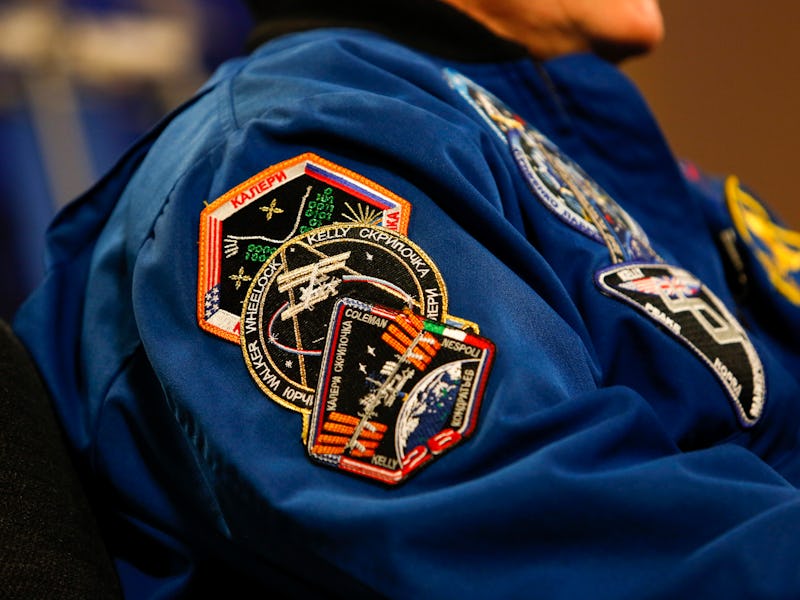Scott Kelly’s Spacesuit Is Covered in NASA Patches. What the Hell Do They Mean?
They don’t hand ‘em out to just anyone.

Astronaut Scott Kelly has returned from his #YearInSpace mission just in time to spend the next two years enjoying bout after bout of mental and physical testing. The man will be poked and the man will be prodded as researchers study the effects of long term space travel on the human body. If his public appearances thus far are any indication, he’ll spend his non-testing hours is a NASA flight suit. It’s the look he’s been rocking since touching back down. And it’s also a style that provokes a specific question: What do all those patches mean?
Mission patches may seem like an antiquated tradition, but the world’s space agencies love them. Nearly every single organization that participates in human space exploration — public and private alike — gives astronauts mission patches as participation awards. They’re unique souvenirs that recognize the very few and very exceptional men and women who’ve left the still somewhat safe confines of this planet’s atmosphere.
Although the former Soviet Union’s Vostok program gave birth to the first human spaceflights, it was NASA’s Mercury program that launched the mission patch tradition. Alan Shepard wore a patch that read “Freedom 7” — the name of his space capsule — when he flew up into space and became the second person and first American to do so.
Ever since, astronauts around the world have had mission patches stitched to their space suits to designate where they’ve been and what they’ve done. Altogether, Kelly has been to space six times and has had the privilege of being a part of 11 different missions (actually 12 if you count the #YearInSpace as its own). Here are those 12 different patches stitched to his space suit:
STS-103
STS-103, launched December 19 - 27, 1999.
STS-118
STS-118, launched August 8, 2007.
Soyuz TMA-01M (Expedition 25/26)
Soyuz TMA-01M, launched October 7, 2010
Expedition 25, began September 25, 2010.
Expedition 26, began November, 26 2010.
Soyuz TMA-16M (Expedition 43/44/45/46)
Soyuz TMA-16M, launched, March, 27 2015
Expedition 43, began March 11, 2015.
Expedition 44, began June 11, 2015
Expedition 45, began September 11, 2015
Expedition 46, began December 11, 2015
Year in Space mission
The special emblem given only to Scott Kelly and Mikhail Kornienko for their Year In Space mission.